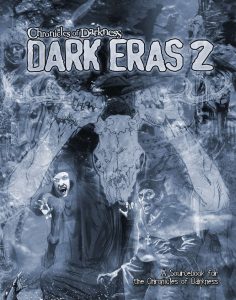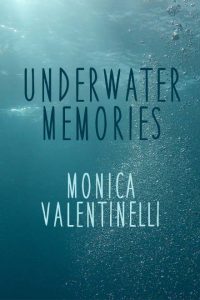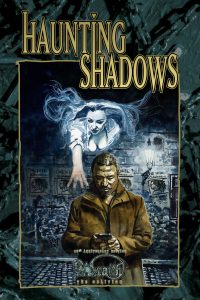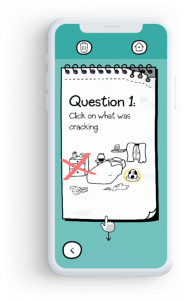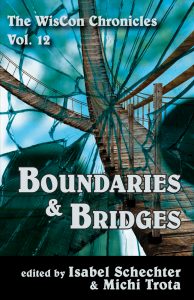Two of the ongoing needs in game production are to retain players and attract new players. In video games, short interactive demos give players the feel and basic functionality of the game. Part-marketing/part-preview, player demos are arguably the best way for them to understand gameplay outside of actual play reels.
In hobby gaming, there’s a number of ways to preview a game before a title debuts ranging from actual play videos to hands on demos at conventions or retail stores. This introduces a lot of challenges for veterans. After a while, it’s easy to associate who’s playing a game with personal interactions online and off. This can skew a designer’s perspective and lend to design decisions geared toward the audience you’ve encountered and not the people who play the game but never contact the publisher. Setting sample data set analyses aside, the people that interact with a publisher are not typically new players, either.
Jump starts, quick starts, convention demos (live, recorded, and in print), and actual play videos work well when they’re designed to attract new players–people who don’t typically interact with your company. Otherwise, you’re targeting players in the same audience at different times. Though existing players and player retention are both incredibly important, new players are crucial to the overall health of the industry. If you’re having trouble understanding why, please remember that gaming is a dynamic industry. New players often become core fans integral to the community in direct and indirect ways.
Attracting new players is a complex process that requires a multi-pronged approach. It is often intimidating to be a new player because they don’t know the culture (of the publisher, fans, and intersecting micro-communities) or the linguistics on top of not knowing how to play that game. These are barriers to new players that can be resolved in multiple ways, but doing so requires intent and knowledge of both community management and basic marketing techniques.
This process is easier for new games that don’t have previous editions attached and becomes increasingly more challenging the older the game (or property) is. These legacy games (Shadowrun, Vampire: The Masquerade, Dungeons and Dragons) are more complex to manage because of their multi-year, multi-edition spanning history. Each edition that debuts, which is healthy for a publisher to consider, has a core audience and the potential to welcome new players. If the game is primarily being played solely by legacy players with few to no new players added, then over time the core base will shrink.
Using Product to Attract New Players
One product that can help reach out to new players is a quickstart. Here’s where it gets fuzzy: the words “jumpstart” and “quickstart” are often used interchangeably, even among publishers. I asked Matt M McElroy, the Operations Manager for Onyx Path Publishing, what the difference was. He said that: “Jumpstarts are more robust, and are basically starter sets in book form. Quickstarts are very light introductions with some marketing attached.” The jumpstart can also serve as a quickstart and often does, which is partly why the terms are swapped so often.
Going forward, I’ll use the word quickstart to mean “a short standalone marketing product designed to demonstrate the core rules and feel of a game” and a jumpstart as “a robust starter set for a game that includes an adventure, characters, etc.”
Quickstarts are almost always free and are treated as a marketing expense; jumpstarts can be free, but are often not due to the costs involved. Often, jumpstarts must hold more perceived value for the consumer than a free product because of the cost.
Designing the Quickstart
Designing a quickstart is one-part game design, one-part marketing. I personally feel that game designers shouldn’t develop the quickstart’s outline by themselves. This task is something the publisher and marketer should be involved with for a few reasons. They typically 1) know their core fanbase 2) have a rough budget in mind and 3) know how to brand their game. Who works on the quickstart, in particular, is less about skill and more about perspective.
Step One: Identify Your Audience
How a team is set up to handle production won’t matter unless the publisher has a clear idea of who the quickstart is for. Typically, that answer is one or more slices of an overall audience. Just saying “new players” is pretty generic. New players who like “X” system can be too specific if that fanbase is small or insular.
To figure out audience, I recommend reviewing a minimum of five similar products produced by different companies. In this way, you establish a marketing baseline for your game by analyzing what others have already produced.
Step Two: Determine Your Message
Once you have your audience in mind, you can then brainstorm your message. Saying “we have the best game evah!” is not a good message and, quite frankly, is challenging for engagement. Rephrase that to be: “here are the reasons why this title is the best game of its kind”. Then, list the reasons.
Unpacking my last statement, here’s what my rephrased statement means:
- * here are the reasons – you’re presenting the meat of what your audience needs to know in order to purchase your game.
* why this title – you’re focusing on revealing more about this game and not previous editions, similar settings, etc. This keeps your focus on the present.
* is the best game – you’re acknowledging the hard work that went into making your game. There’s nothing wrong with being proud of what you created.
* of its kind – you’re acknowledging this game has its own style/feel and will be compared to other games in this vertical regardless of publisher.
Codifying these reasons will force you to think about your game from the perspective of someone who’s never heard of it–which is typically the hardest audience to write for.
Step Three: Identify Components
While an outline is valuable and typically follows next, I feel that quickstarts necessitate a different conversation before it can be finalized. Components are key elements of a game that are important to the audience and messaging.
Items might include:
- * Ad for the corebook
* Sample player character
* Sample NPC
* Highlights of gameplay: damage, advancement, combat, investigation, social conflict, player vs. player, success/fail, etc.
* Condensed setting
* Iconic art
* Flash fiction or character sketch
* Corebook chapter preview
* A DM-facing section
* Sample adventure hooks
* Sample loot
* Sample equipment
* Sample map
* Mini-scene
* Gameplay examples
* Graphs/icons of dice rolls
* Full page ad for company (with links to social media, streaming channels, etc.)
* Ad for upcoming products or Kickstarters
* Interview questions with the producer/developer
* …and more!
I recommend that this stage occurs without a clear page count or product spec to freely allow for brainstorming.
Step Four: Outlining
This phase is where the nuts and bolts shape the quickstart. I personally believe a sample layout here is crucial, because knowing how many words are on a page will impact the outline. Once the production parameters are known and a page count is determined, then content can be assigned on each page.
Here, it’s also smart to figure out how you intend to distribute your quickstart, because that will affect its intent and budget. Saddle-stitched and digital quickstarts are the two most common types and are used for different reasons. Printed quickstarts are great for conventions/retail distribution and may attract people who have never heard of that game or publisher before. Digital quickstarts can do the same thing, depending upon where it’s offered and what the perceived value is.
If you’re on the fence during the outlining phase and find you’re adding more information, you might want to consider a hybrid jump/quickstart that you can charge for. This is the perfect step to make this decision!
Step Five: Production
Following this, it’s time for production to begin. I would treat this product just as you would a gaming supplement by hiring a writer who can simplify setting and rules into a condensed space. Less is usually more. The quickstart is a slice of what your game is all about and why it’s unique. I would absolutely lean into that to best inform potential players.
If you’re worried about art, I agree with your instinct. People make decisions to buy games for all kinds of reasons and mentally associate gameplay with emotions that are invoked through their experiences. Art can invoke emotion and is important to their impressions of value and setting.
Lastly, you might get to this point and realize you don’t know how to market your game. That’s okay! It’s for this reason you’ll want to plan a quickstart even if you don’t go through with production. The elements you decide during this project further shape how you want to present your game. If you need to stop and rethink a detail, that’s a good thing to happen early on.
Thanks for joining me and good luck!

